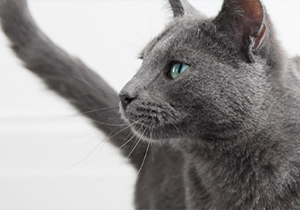Aggression In Cats
Wondering why your fabulous feline wakes up and chooses violence? Most cats are affectionate, but these adorable munchkins are also prone to violent fits of hostility, making aggression the most common feline behavior problem. Although cat aggression is taken less seriously than dog aggression, it is still important to treat it on time.
Cats show signs of aggression when they feel vulnerable, and while it is a natural response in wild cats, it can be inconvenient for housecats. So, this article gives you a better understanding of aggressive behaviors in cats and how to address them for an improved quality of life and to bond better with your royal kittiness.
What is Aggression in Cats?
Aggression in cats is generally understood as threatening or harmful behavior directed towards other cats, animals, and humans. In the wild, cats can become violent when their personal space is breached or when they feel threatened. In addition, aggression is also a natural response used by wild cats to ward away threats from their territory, defend the offspring, or protect themselves against predators.
Aggression in cats can manifest as a range of behaviors that vary depending on the circumstances and factors leading to the hostile behavior. Housecats have a mild aggressive response compared to feral cats. But the aggression is displayed in the same way as growls, hisses, and attacks that includes biting and scratching.
Signs of Aggression in Cats

-
Growling
As impressive and vocal as cats are, it is no surprise that they often rely on various vocal patterns to communicate a wide range of emotions and feelings. Although their characteristic meow is the most commonly made sound by cats, sounds like hissing and growling are also common within the feline community and is mostly used to suggest aggressive behavior in cats or when the cat is angry.
-
Hiding and refusing to come out
Angry cats often show signs of aggression in cats by hiding and refusing to come out. Cats that are feeling anxious or stressed are likely to hide from everyone till they’ve calmed down, and may show signs of feline aggression if they are forced to come out of their hiding spot.
-
Ears are flattened back and sticking out
Your cat’s general body language can tell you a lot about their moods and emotions at the moment, and learning these behavior patterns can help you to appreciate your furry munchkin all the more. Signs that the cat is angry, such as ears flattened back and sticking out allow you to figure out an angry cat and aggression in cats.
-
Biting when you try to pet them
Cats are famously introverted and value their personal space above everything else, even when it comes to being pet and loved. Most cats have a tolerance for pets and interactions, and can show signs that the cat is angry or aggression in cats such as biting when you try to pet them once they are reaching their threshold.
-
Twitching tail
The movements of their tail contribute greatly to the feline body language, and the movement of the is commonly used to convey a wide range of emotions within the feline community. While the tail raised up high is recognized as a friendly, affectionate gesture, a twitching tail is a sign that your cat is feeling anxious, or the cat is angry and aggressive.
-
Clawing at furniture
Cats are natural hunters, and in the wild, they are known to sharpen their claws on tree barks to assist them in hunting, or to protect themselves against larger predators. Although housecats rarely rely on their hunting instincts or feline aggression, they may claw at furniture to sharpen them, anticipating a potential threat in their immediate surroundings and aggression in cats.
-
Purring
Although purring in cats is generally a positive sign and is usually an indicator that your fluffy feline is feeling content and happy, purring can have other meanings too! In addition to feeling relaxed and content, cats are known to purr to relieve anxiety when they are stressed, and can be easily triggered or lash out, displaying aggression in cats.
Types of Aggression in Cats
-
Play Aggression
Play aggression or rough playing can give way to feline aggression during activities such as play sessions, when your cat might be encouraged to scratch, bite or pounce inappropriately on humans and playmates.
-
Fear Aggression
Angry cats may start showing signs of feline aggression when they are stressed and afraid, which can be triggered by an encounter with an unfamiliar person or animal, or even by a sudden noise causing a violent, unpredictable manner when the cat is angry.
-
Petting-induced Aggression
Most cats have a distinct threshold to being cuddled and petted. Petting them longer than they can tolerate may also result in overstimulation, causing your cat to show signs of an angry cat.
-
Maternal Aggression
Following the birth of her kittens, the mother cat is known to be overprotective of her children, often resorting to violent and aggressive behavior in cats in order to ward away any potential threats from her newborns.
-
Territorial Aggression
Cats are territorial by their very nature, and breaching their personal space may result in sudden aggressive behavior in cats, where the angry cat might end up trying to scratch or bite the animal or human that has entered their established area within the household.
-
Status-induced Aggression
Status-induced aggression is also common in angry cats, and this aggressive behavior in cats is usually known to be a sign of establishing dominance in the household, causing angry cats to hiss, growl or swat at a potential threat or competitor.
How to Calm Angry Cats?
- Approach them with caution
- Interrupt aggressive behavior
- Provide a safe environment
- Offer cat treats
- Provide Suitable toys
What Not to Do With Angry Cats
Although cats are prone to sudden aggression, they seldom mean harm. So, instead of being reproachful, it is important to keep your hands, feet, arms, and legs away from injuries.
When it comes to reducing aggression in cats, do not us physical violence or other forms of punishment as they will not help address feline aggression. On the contrary, such actions may result in your cat resenting you.
Do not praise, reward, or comfort an aggressive cat to calm it down either. Instead, aggressive behavior in cats needs proper training. It is more efficient to consult a cat trainer to ease the aggression and find workable solutions for treating aggression in cats.
FAQs
-
How do you fix aggression in cats?
When it comes to aggression in cats, it is important to treat it in a patient, positive manner rather than reacting to it violently. Positive reinforcement such as delicious treats, affection and toys can help in fixing aggression in cats.
-
What are 4 examples of aggressive behavior?
Aggression in cats can be expressed in several different ways depending on the situation and the general behavior of the cat. Swatting violently, biting, scratching, and hissing and growling are the 4 most common examples of aggressive behavior in cats.
-
What triggers aggression?
Aggression in cats can be triggered by a wide range of factors, including when your kitty is feeling stressed, anxious or threatened, as well as overstimulation, encroachment in their boundaries, and territorial and maternal aggression, or even when they are playing.
-
How to reduce aggression?
Although reducing aggression in cats is a time-consuming challenge, staying patient and encouraging your kitty with delicious treats, affection and toys can prove to be effective. Additionally, it is also important to respect your kitty’s personal space and offer them a safe environment in the household.
-
What’s the difference between anger and aggression?
As cat parents, it is important to know the difference between feline aggression and anger. While feline aggression may include violent swatting, biting, scratching, hissing and growling, feline anger is usually limited to sulking and other mild gestures.










